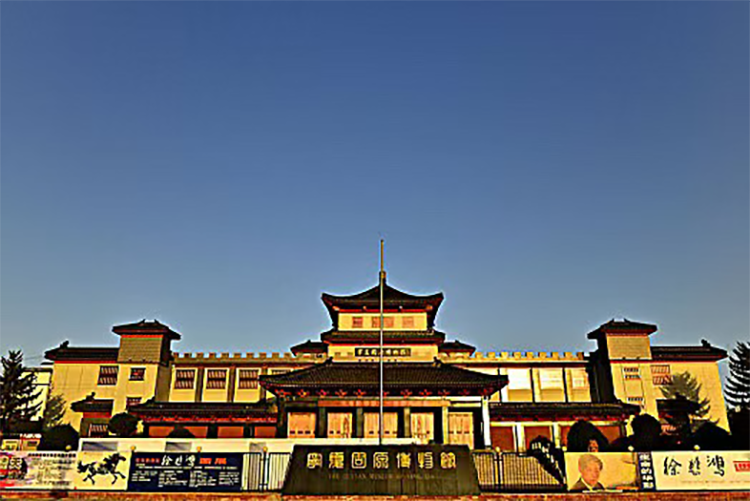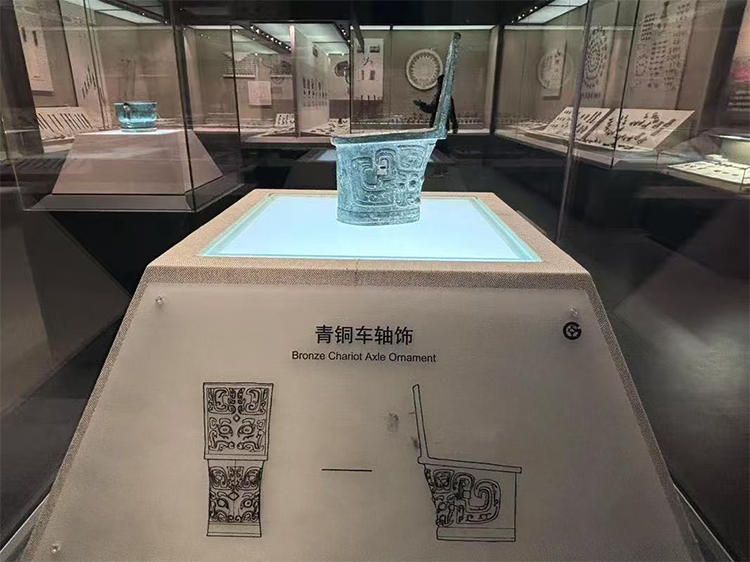Explore the Silk Road Museum in Guyuan: Timeless Treasures of the Ancient Trade Route
Introduction: A Journey Across Time on the Silk Road
In Guyuan, Ningxia, a building that blends Tang‑era monumentality with Islamic domes quietly stands—the Guyuan Museum, a national first‑class museum and an important repository of Silk Road relics. Step inside and you enter an ancient trade route connecting East and West: each artifact tells of camel bells, bustling caravans and cultural exchange. From the exquisite Northern Wei lacquer coffin painting to a Sasanian gilt silver ewer, the collection reveals the rich fusion and splendor of Silk Road civilizations.
1. Core features and positioning: a cultural witness on the Silk Road
Guyuan Museum, themed “Millennia of Guyuan, Silk Road Splendor,” is one of northwestern China’s leading Silk Road museums. Its collection numbers nearly 20,000 objects, including 16 state‑level national treasures—most famously the Northern Wei lacquer coffin painting and the Sasanian gilt silver ewer. The museum is a must‑visit for history buffs, art lovers and cultural explorers.
2. History, architecture and status: a Sino‑Western cultural landmark
Founded in 1983 and reopened in a new building in 2016, the museum’s architecture combines Tang‑style forms with Islamic domes, symbolizing Guyuan’s role as a Silk Road crossroads. The main structure is grand and ceremonial, while the interior galleries use modern layouts and digital displays to bring artifacts to life.
As a national first‑class museum, Guyuan Museum is respected at home and abroad and holds significant scholarly value for research into Silk Road trade, religious spread and ethnic exchange.
3. Key exhibits and immersive experiences: signature treasures of the Silk Road
– Northern Wei lacquer coffin painting (one of only two remaining nationwide)
This national treasure was excavated from a double burial and features brightly colored lacquer paintings that depict myths, hunting scenes and aristocratic life—demonstrating Northern Wei painting skill and aesthetics.
– Sasanian gilt silver ewer (a Silk Road trading treasure)
This exquisite silver ewer from the Sasanian Empire (modern Iran) is engraved with scenes from Greek mythology, a tangible witness to East–West cultural exchange and a world‑class artwork.
– Sasanian glass bowls (masterpieces of Western region craftsmanship)
The translucent glass bowls display ancient Persian glassmaking excellence that reached China via the Silk Road and became prized luxury items among the elite.
Beyond these highlights, the permanent exhibition “Millennia of Guyuan, Silk Road Splendor” features bronzes, silk textiles, Buddhist statuary and other rare objects that trace Guyuan’s history from prehistory through the Ming and Qing dynasties.

4. Atmosphere and visitor experience: a tranquil cultural hall
Visitors tend to be history lovers, scholars and students; the museum atmosphere is solemn and quiet—ideal for contemplative viewing. Galleries follow a ring‑like layout, with soft lighting and smooth circulation allowing visitors to explore by period or theme.
5. Itinerary planning and practical tips
Recommended visit routes
– Highlights tour (1–2 hours): Head straight to the second‑floor Silk Road gallery to see the Northern Wei lacquer coffin painting, the Sasanian gilt silver ewer and the Sasanian glass bowls.
– Deep dive (3+ hours): Start on the first floor with “Prehistoric Guyuan” and move in chronological order to understand the region’s cultural evolution.
Suggested visit length
– Casual visitors: 2–3 hours
– Cultural enthusiasts: half a day
Suitable for
– Solo explorers who love history and art
– Families for educational visits (some interactive displays)
– Researchers seeking abundant artifacts and documentation
Nearby combinations
Pair a visit to Guyuan Museum with the Xumi Mountain Grottoes (a World Heritage site) or Liupan Mountain National Forest Park for a full day of culture and nature.
6. Practical information
Guides
– Audio guide: Chinese and English audio available (recommended to rent).
– Live guided tours: Professional guides available by appointment (advance contact advised).
Bookings and crowds
– Free admission (closed Mondays); holidays can be busy—arrive early in the morning.
Language support
– Labels are bilingual (Chinese/English); some English resources on the official website.
Payments
– Permanent exhibitions are free; special exhibitions may charge. Bring cash or mobile payment (WeChat/Alipay) as backup.
Facilities
– Free Wi‑Fi available inside the museum.
– Seating and drinking water stations provided.
– Full wheelchair access and facilities for visitors with reduced mobility.

7. Local insights: hidden gems and watchouts
Hidden gems
– Northern Zhou mural tomb reconstruction gallery: a vivid recreation of ancient tomb interiors with strong immersive appeal.
– Silk Road coinage display: shows currencies from different dynasties and tells the story of trade prosperity.
Watchouts
– The museum is closed on Mondays—check before you go.
– Flash photography is prohibited to protect fragile artifacts.
8. Practical facts
Name
– Guyuan Museum
Address
– No. 133 Wenhua West Street, Yuanzhou District, Guyuan, Ningxia
Opening hours
– Tuesday–Sunday 9:00–17:00 (last entry 16:30); closed Monday (except public holidays)
Tickets
– Permanent exhibition free; special exhibitions may charge.
Transport
– Bus: take routes 1 or 3 to “Museum” stop.
– Driving: on‑site parking available; parking fee about RMB 5/hour.

Conclusion: A cultural encounter across a thousand years
Guyuan Museum is more than a repository of objects—it is a three‑dimensional history of the Silk Road. From its signature treasures to its evocative architecture, it’s a place that lingers in memory. If you love history and culture, make sure Guyuan Museum is on your Ningxia itinerary.


